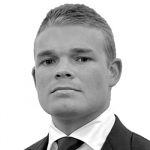Agenda
Symposium
Friday, June 16
Times in EST
8:00 - 9:30 AM
9:30 - 9:40 AM
9:40 - 9:45 AM
9:45 - 10:15 AM
Tim Coldwell, President of Chandos, a tech-driven and sustainability-focused construction company, will discuss the latest industry trends in construction, including prefabrication, design for disassembly, and passive housing.
10:15 - 11:00 AM
Designed to be a high-performance net-zero carbon building, the MacKimmie Complex comprises a fully renovated tower and block and a brand-new link that connects the two buildings by an atrium, surrounded by a redesigned outdoor gathering space. Designed with high performance features, the project has achieved a CaGBC Zero Carbon Design Certification in 2020. The multi-year, multi-phase project will enhance pedagogical and administrative environments, accommodate growth, and strengthen the sense of place and community in the heart of the University of Calgary’s main campus.
The building enhances modern-day learning in a way that goes beyond technology and programming. The building skin makes its energy-modelling systems tactile, or visible to the eye, as a way to make climate change conversations a permanent fixture in life on campus.
11:00 - 11:25 AM
11:25 AM - 11:50 AM
Peter Russell, Partner at Hydronic Shell, a prefabricated facade panel concept which includes all elements necessary to deliver complete heating, cooling, and ventilation to a building, will present how this emerging technology is poised to transform the building envelope market. Hydronic Shell has the potential to radically improve the energy performance of existing building stock as well as occupant thermal comfort and well-being. The piping and ductwork in each panel connects to vertical risers to form a complete HVAC system with all components enclosed within the new facade and installed from the building exterior for a cost-effective and non-invasive solution to building decarbonization. This system could be implemented to handle each unit in a multi-unit residential building, or to manage the perimeter loads in other building types such as offices, schools, and warehouses. Join us for this exciting presentation on the future of the building envelope!
11:50 AM - 12:30 PM
How do the best architects interface with their building suppliers? What kinds of services, products expertise, and resources for knowledge sharing are there and what models are working? What do designers need to know about testing, specifying, and navigating the vast array of suppliers, manufacturers, and consultants to collaborate on the successful delivery of projects? This roundtable with leading building materials manufacturers will discuss the latest in advanced materials-those newly available and just around the corner. Learn how architects can work together with manufacturers to build with the latest, most up-to-date technologies and projects, and hear what’s next for the industry.
12:30 - 1:30 PM
1:30 - 2:15 PM
Join AEC Industry leaders in a wide-ranging discussion on changes to design and construction methods. We are now moving into a future that is beyond the all-glass building requiring different approaches and strategies for envelope design. As a significant driver of energy consumption and operational carbon, the building envelope is at the forefront of every green-building project. Canada’s Green Code, municipal mandates for embodied and operation carbon reduction, and the introduction of new materials will radically transform how we build and by which standards our buildings are judged.
2:15 - 2:45 PM
Tyler Walker, principal at MJMA, and Ian Mountfort, principal at Blackwell, will present the Churchill Meadows Community Centre as a case study of how intelligent building envelope design can serve humanistic goals while also improving sustainable and accessibility. To this end, the presentation will touch on valuable lessons learned during the design process, including: the integration of timber fabrication and the economy of structure, demonstrating the strategic use of wood in public buildings, and the process of working collaboratively with the structural engineer and contractor. It will further expand on details such as the concealed lateral bracing and tripling of the glulam columns, with references to other similar projects where structural innovation helped drive the overall design direction.
2:45 - 3:15 PM
3:15 PM - 4:00 PM
Extreme winds are increasing worldwide due to climate change effects. Angela Mejorin, post-doctoral researcher at Western University, will present her Ph.D research results regarding performance-based facade design. Considering the current and future urban densification, designers should carefully refer to local environment to set performance-based design goals. This presentation discusses an alternative design framework to establish impact test requirements for façades, to mitigate the damaging effects of wind-borne debris.
4:00 - 4:30 PM
In this project spotlight B+H principal Mark Berest will present the Library and Archives Canada’s (LAC) Gatineau 2, a new facility dedicated to the preservation of archival materials. The projects facade, which is constructed from precast concrete, is clad in different types of stone that represent the geological stratification found in the region. Using a nested-thermal envelope format, the building aligned to meet the Government of Canada’s priorities to invest in sustainable federal infrastructure. Gatineau 2 is the first net-zero carbon building dedicated to the preservation of archives in the Americas and the first federal building built to the requirements of Canada’s Greening Government Strategy.
4:30 - 4:40 PM













